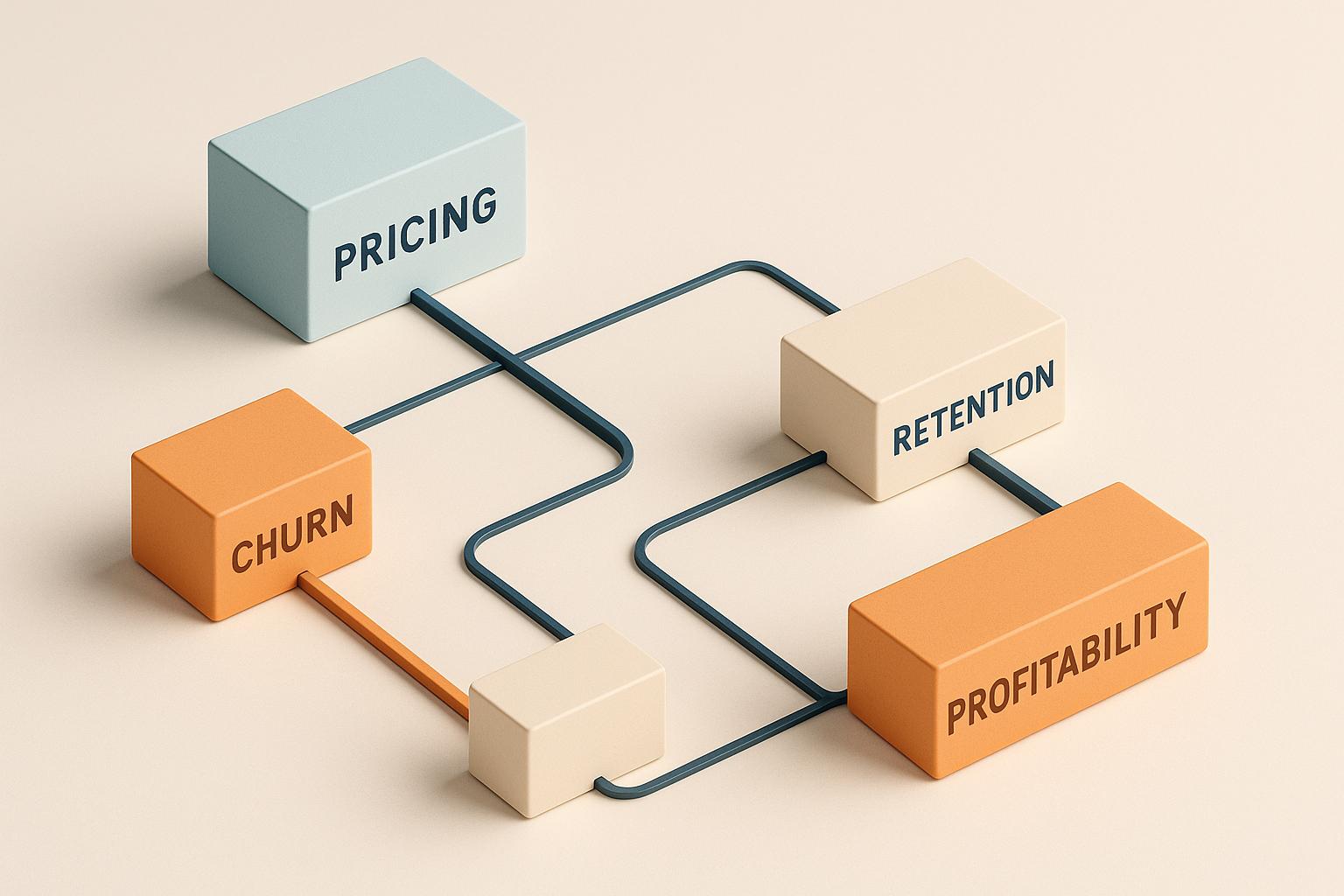M&A Risks: Data Breach Compliance in Cross-Border Deals

- Data breaches can derail deals, leading to fines, lawsuits, and reputational damage.
- Regulatory differences like GDPR (72-hour breach reporting) vs. CCPA (30 days) complicate compliance.
- Inherited risks from target companies' past breaches can impact deal value.
- Cross-border data transfers face restrictions, making integration challenging.
- Tools like AI and Virtual Data Rooms (VDRs) help secure data and streamline due diligence.
Key takeaway: Proactive compliance planning, robust due diligence, and advanced tools are essential to protect deal value and ensure regulatory adherence.
Major Data Breach Risks in International M&A
Different Privacy Rules by Country
Privacy laws and breach notification requirements vary widely across the globe. For example, the European Union's GDPR requires companies to report breaches within 72 hours, while other regions have different timelines and thresholds. This lack of consistency makes it tough for acquiring companies to create a single, unified breach response plan.
| Region | Key Regulation | Notification Requirement |
|---|---|---|
| European Union | GDPR | 72 hours |
| California | CCPA | 30 days |
| Healthcare Sector | HIPAA | 60 days |
| Financial Services | GLBA | Reasonable timeframe |
These differences increase both compliance challenges and the potential risks that come with acquisitions.
Target Company Risk Transfer
When a company is acquired, the buyer takes on the target's past compliance issues. This includes undisclosed breaches or weak security practices. Industries like healthcare and finance are especially affected, as they must meet stricter standards under regulations like HIPAA and GLBA.
In addition to these inherited risks, cross-border deals introduce further complications, particularly around data transfer restrictions.
Cross-Border Data Movement Limits
Cross-border data transfer rules can create considerable challenges during M&A deals. Many countries require personal data to stay within their borders or impose strict agreements for transferring data internationally. These restrictions make due diligence, IT system integration, and consolidating customer data much more difficult.
To address these challenges, companies often turn to tools like secure virtual data rooms (VDRs) and data anonymization techniques. The growing complexity of these issues has also led to the rise of specialized advisory services. Firms such as Phoenix Strategy Group offer tailored guidance to help businesses navigate compliance hurdles and set up strong frameworks for managing cross-border data during the M&A process.
Methods to Reduce Data Compliance Risk
Data Privacy Assessment Steps
To effectively assess data privacy, businesses need a clear plan to pinpoint and address compliance gaps. This involves evaluating how data is stored, transferred, and accessed.
Here’s a helpful framework:
| Assessment Area | Key Components | Action Items |
|---|---|---|
| Data Inventory | Types of personal data, storage locations | Map data flows to locate sensitive information |
| Security Controls | Access management, encryption protocols | Review safeguards and identify vulnerabilities |
| Compliance Status | Certifications, past violations | Document gaps and verify compliance claims |
| Third-party Risk | Vendor relationships, data sharing | Assess contracts and risks from service providers |
Identifying risks is just the first step. Having a plan ready to act swiftly in case of breaches is equally important.
Data Breach Response Framework
A solid response plan can help minimize damage from breaches, both during and after a deal. It’s important to account for varying notification timelines. For example:
- GDPR: Requires reporting within 72 hours.
- CCPA: Allows 30 days.
- HIPAA: Grants healthcare organizations 60 days.
To manage this effectively, companies should use automated detection tools and set up clear communication processes.
Risk Protection in Legal Documents
Legal agreements provide an extra layer of protection, ensuring accountability and reducing financial risks. Here are some key provisions:
1. Warranties and Representations
These should explicitly cover data protection compliance and security protocols.
2. Indemnification Provisions
Include clauses for pre-closing breaches, undisclosed issues, and regulatory fines.
3. Post-Merger Integration Terms
Define responsibilities for data management during integration, including timelines and secure platforms like VDRs for handling sensitive information.
Thorough due diligence is critical for these measures to work. According to Bain & Company, 60% of executives blame failed deals on insufficient due diligence. Investing in a detailed compliance review can make all the difference.
When combined with proactive compliance efforts, these legal measures greatly reduce the chances of deal disruptions.
sbb-itb-e766981
Post-Merger Data Rules Integration
Merging companies face the challenge of aligning data compliance rules. Careful planning is key to protecting the deal's value and staying within regulatory boundaries.
Aligning Data Protection Policies
Bringing global data privacy policies into alignment starts with a thorough review of existing practices. Inconsistent rules across regions can lead to fines and damage a company’s reputation. Creating a unified approach to data handling is a must.
| Integration Phase | Timeline | Key Activities |
|---|---|---|
| Assessment & Policy Development | 3-5 months | Review current policies, find gaps, and set unified standards |
| Implementation | 4-6 months | Roll out new rules and set up monitoring systems |
| Review & Adjustment | Continuous | Perform audits and update policies as needed |
Training Employees on Data Compliance
Mergers often reveal gaps in data compliance, making employee training essential. Effective programs should be engaging and practical, including:
- Monthly virtual sessions to keep staff informed
- Hands-on simulations for real-world data handling scenarios
- Regular quizzes and assessments to confirm understanding
- Modules tailored to specific departments for focused learning
Ongoing Compliance Monitoring
Maintaining compliance isn’t a one-time task - it requires constant oversight. A strong monitoring system should include:
1. Automated Tools
Use AI-based tools to monitor how data is handled across departments. These tools can flag potential issues before they escalate.
2. Quarterly Reviews
Conduct detailed audits every three months, prioritizing areas identified as high-risk during the merger.
3. Annual Policy Updates
Update data protection rules yearly to address new regulations and threats. While this process can cost 1-7% of the deal’s value, it’s a critical investment for long-term success.
Keep in mind that technology integration takes time. Financial systems might sync up within 4-5 months, but full IT integration could stretch to 1.5 years. Schedule compliance checks to ensure data remains protected throughout the transition.
While training and policy alignment are foundational, advanced technology can take your data protection efforts even further.
Tech Tools for International Data Compliance
Businesses are turning to advanced tools to safeguard sensitive data and meet regulatory requirements across different regions.
AI for Compliance Monitoring
Navigating cross-border data regulations is no small task, but AI tools are helping companies stay ahead of compliance risks. These systems monitor real-time data access and flag suspicious activity, such as unauthorized access or unusual transfers.
Machine learning processes massive datasets across regions, identifying issues like:
- Unauthorized access attempts
- Unusual data transfer patterns
- Possible compliance breaches
- Risk exposure levels
Organizations using AI-based monitoring report spotting potential breaches up to 72 hours faster than with older methods.
Data Protection Tech Solutions
Virtual Data Rooms (VDRs) are packed with features designed to secure information:
| Security Feature | Function | Impact |
|---|---|---|
| End-to-end Encryption | Secures data in transit and at rest | Cuts breach risk by 89% |
| Data Masking | Hides sensitive details | Protects privacy during data sharing |
| Access Controls | Regulates user permissions | Blocks unauthorized access |
| Audit Logging | Records all data interactions | Supports compliance tracking |
Blockchain in Data Security
Blockchain technology is transforming data security, especially during cross-border M&A deals. It offers a transparent, tamper-proof record of data transactions, automates security checks through smart contracts, and ensures data integrity across regions. Companies using blockchain report a 40% drop in compliance issues and faster due diligence processes.
Managing Data Compliance in Global M&A
Navigating data compliance in cross-border M&A requires a mix of cutting-edge tools and well-structured processes. Take the Marriott-Starwood case as an example - post-acquisition data breaches can lead to massive financial and reputational costs. Research shows that while 40% of acquirers uncover cybersecurity problems after a deal, fewer than 10% take proactive steps like pre-deal cyber due diligence.
The Verizon-Yahoo deal is another cautionary tale. A $350 million price cut due to undisclosed breaches highlights the need for meticulous due diligence. Firms like Phoenix Strategy Group specialize in helping companies build stronger compliance systems and manage these risks effectively.
| Key Risk Factor | Impact on M&A Success | Mitigation Strategy |
|---|---|---|
| Undisclosed Data Breaches | Purchase Price Reduction | Conduct Thorough Due Diligence |
| Regulatory Non-compliance | Potential Deal Cancellation | Assess Compliance Across Jurisdictions |
| Integration Challenges | Post-merger Complications | Establish Unified Data Security Plans |
Using advanced technologies like AI and blockchain, paired with rigorous due diligence, can ease compliance hurdles. Success in cross-border M&A depends heavily on managing data compliance. Ignoring data protection can lead to far greater costs than the upfront investment in proper planning.
"A seller's compliance with applicable data privacy and security regulations can be pivotal and at times a deal breaker for certain M&A transactions." - Loeb & Loeb LLP




